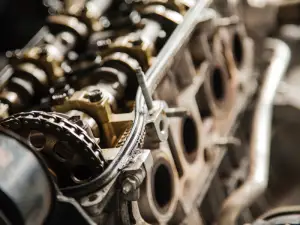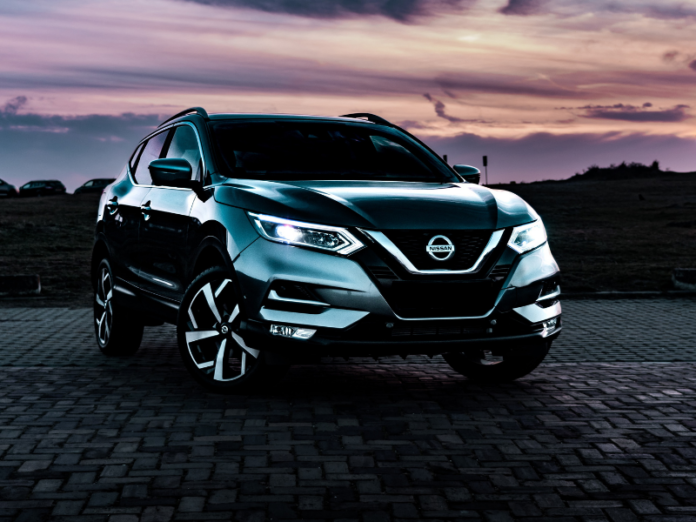Since its release in 2006, the Nissan Qashqai quickly became a major player in the affordable family SUV market, with over 3.3 Million cars produced between 2006 & 2021. Although in this time the Nissan Qashqai hasn’t had a completely flawless reputation for reliability. In this article, we’ll be exploring the most commonly reported Nissan Qashqai 1.5 dCi engine problems.
The 1.5 dCi or K9K engine as its also known, was fitted to a huge quantity of Nissan Qashqai’s. Therefore this engine has been tested in real-world conditions on mass, by none other than the family market. As we know if there is any weakness at all, the notoriously hard day to day use of the family car market will quickly find it.
Today, we will run through some of the most common questions asked about this engine. Whilst pointing out some of the common problems owners report.
What Problems Does The Nissan Qashqai Have?

Since its release, the Nissan Qashqai has been known to have a few common problems.
Among these common problems, Nissan Qashqai 1.5 DCI engine problems were sometimes reported. Some of these issues were fairly predictable and related to mileage and use, but others were a little more unique to this engine and could possibly be avoided in some cases.
Common Nissan Qashqai 1.5 dCi Engine Problems
• Sticking EGR Valves
Sticking EGR valves on the 1.5 dCi are a fairly common occurrence and is also common with many modern cars that use an EGR valve.
The EGR valve or exhaust gas recirculation valve, allows a small amount of exhaust gas to recirculate back into the intake manifold where the gas is then processed for a second time. This is to help reduce the amount of NOx emitted in the exhaust.
Naturally, the EGR valve comes into contact with lots of unfiltered exhaust gases. These exhaust gases carry carbon deposits that can get baked onto the inner workings of the EGR valve and eventually stop the valve from operating correctly.
Generally speaking, cars that are regularly used for longer, faster journeys are less affected by this. This is due to a number of factors which include a faster flow of exhaust gases, higher temperature & more consistent fuelling, which leaves less residue.
Symptoms of a sticking EGR valve
Symptoms of a sticking EGR valve can present as a rough idle, including a possible stalling at idle, increased fuel consumption, difficulty starting, sluggish acceleration and of course an engine warning light.
• Injector Failure
The fuel injectors often fitted to some of the 1.5 dCi engines can be a little unreliable. These injectors have also been known to be particularly sensitive to poorer quality fuels & can become clogged with metallic fragments produced by a failing fuel pump.
Therefore it is particularly important to replace the fuel filter regularly on this model & inspect for signs of metallic residue at each interval.
Although fuel injectors are relatively easy to replace, they are a particularly expensive component (around £100 each) and are best replaced as a full set of 4.
Whilst replacing these injectors isn’t in itself a very labour intensive task, these injectors generally need to be coded to the engine control unit (ECU). This is done via specialist software, so makes this repair far less accessible to the DIY car mechanic.
Symptoms of injector failure.
Symptoms of fuel injector failure can include a smell of fuel in the cabin, difficulty starting the engine, a tapping noise, white smokey exhaust & often the engine management light will be illuminated.
• Premature Main & Conrod Bearing wear
One of the most common complaints with this engine is that some owners have experienced premature wear to the crankshaft bearing shells. It is commonly agreed that this tends to be a result of the oil change intervals being too far apart. Therefore some mechanics will recommend shorter intervals of around 10,000 miles between oil changes.
Some mechanics may also recommend preemptive bearing replacement at around 100,000 miles, regardless of previous service records.
Whilst the costs of replacement bearing shells can be surprisingly cheap, (As little as £20). It is however quite a labour-intensive task to replace them. Twinned with this, if the bearings are being replaced at an advanced state of wear, damage to surrounding components can also be sustained. Which can contribute to a fairly high repair bill.
It’s also important to consider, whilst attending to worn bearings the mechanic may also recommend other associated maintenance, like an oil pump replacement.
Symptoms of worn bearings
Symptoms of worn bearings can present as a knocking sound from deep within the engine alongside metallic deposits in the oil. The longer a car is run with significantly worn bottom end bearings the likely hood of damaging surrounding components goes up drastically.
So if you are in any doubt, get the engine inspected by a mechanic as soon as possible.
• Timing Belt Failure
Timing Belt failure has been known to happen fairly regularly. This is also widely agreed to be a result of slightly over-ambitious, manufacturer-recommended service intervals.
Mechanics who are familiar with this engine will generally recommend an early timing belt replacement around 50-60,000 miles. As opposed to the manufacturer recommended intervals which tend to vary between 75-100,000 miles.
Whilst shorter service intervals may sound a little inconvenient, a catastrophic engine failure caused by a timing belt failure is even less convenient.
Symptoms of a failing timing belt
Unfortunately, when a timing belt fails it usually gives very little warning. So, unfortunately, most peoples first indication of a failed timing belt is a sudden clatter, a car that will no longer start and a very large repair bill to match.
However, some are ‘lucky’ and experience warning signs like a misfire, difficulty starting the car or a lumpy idle speed.
Does The Nissan Qashqai 1.5 dCi Have A Turbo?

The Nissan Qashqai’s 1.5 dCi engine otherwise known as the K9K engine, is a 4 cylinder turbocharged diesel engine with direct Common-rail injection.
These engines have a relatively small turbo often provided by both Garrett or BorgWarner.
Whilst diesel cars are already roughly 33% more fuel-efficient than petrol cars. The addition of a turbo further increases the fuel efficiency of a diesel car, whilst also increasing power figures. Due to this, modern diesel cars are almost always fitted with a turbo.
Who Makes The 1.5 dCi Engine?

The 1.5 DCI engine was initially made by the Nissan-Renault alliance and first saw its first debut in the Renault Clio in 2001. Since this time the engine has evolved and many manufacturers have adopted the engine in various forms.
Manufacturers that use this engine are Nissan, Suzuki, Dacia, Infiniti and even Mercedes. In recent years engine sharing amongst car makers has become a surprisingly common practice, as developing a new engine can be extremely expensive and timely.
Is 1.5 dCi a good engine?

The 1.5 dCi has been around for 20 years now, and that fact alone can be read in different ways.
Positively, in this time we have been able to learn the common faults the engine has. This means that mechanics are now widely aware of its requirements and common issues, and are therefore better equipped to diagnose and repair it than they could be with newer engines.
During its long reign, engineers have also been able to learn from issues with the early engines and evolve its design to provide solutions.
The negative argument is that a lot has changed in the past 20 years, and engine design is no different. Some might say the 1.5dCi or K9K engine is a little bit rudementary and is clinging on to some outdated technology & materials that have no place in a modern car.
Our verdict is that although Nissan Qashqai 1.5 dCi engine problems do occur, these problems are, for the most part, easily avoided with a preventative maintenance schedule. When this engine is maintained correctly it can return mileages of well over 150,000 between rebuilds. This, twinned with its excellent fuel consumption figures (50.4 – 74.3 MPG) make this engine a very practical and cost-effective engine choice for many motorists.
Does Nissan Qashqai 1.5 dCi have a DPF?

The DPF or Diesel Particulate filter as its also known wasn’t fitted to the Nissan Qashqai 1.5 dCi prior to 2010.
This is seen as a mixed blessing for some owners, as the diesel particulate filter can be a rather problematic component. It’s quite common for a diesel particulate filter to become blocked and ineffective. However, a DPF when working correctly can dramatically reduce particulate emissions by up to 85-99%!
However, all diesel Nissan Qashqai’s made after 2010 in Europe were then fitted with a DPF. This was a necessary step to ensure Diesel Nissan Qashqai’s adhered to the Euro 5 exhaust emissions legislation.
What Does dCi Stand For?

The dCi stands for direct Common-rail injection. This essentially means that fuel is delivered to the engine via a very high-pressure fuel rail. This fuel rail then connects to solenoid valve injectors rather than low-pressure injector nozzles.
This high-pressure design allows the fuel to be vaporized more effectively. This means the fuel can cover a larger surface area of the combustion chamber. As a result of this, the fuel is burnt far more effectively than in a low-pressure injection system. Which allows for vastly improved fuel consumption, higher power figures and reduced emissions.
Despite its hi-tech nature, this method of fuel delivery was actually pioneered in 1916. Initially intended for use in submarines, and was only introduced for use in road cars in the mid-1990s.



